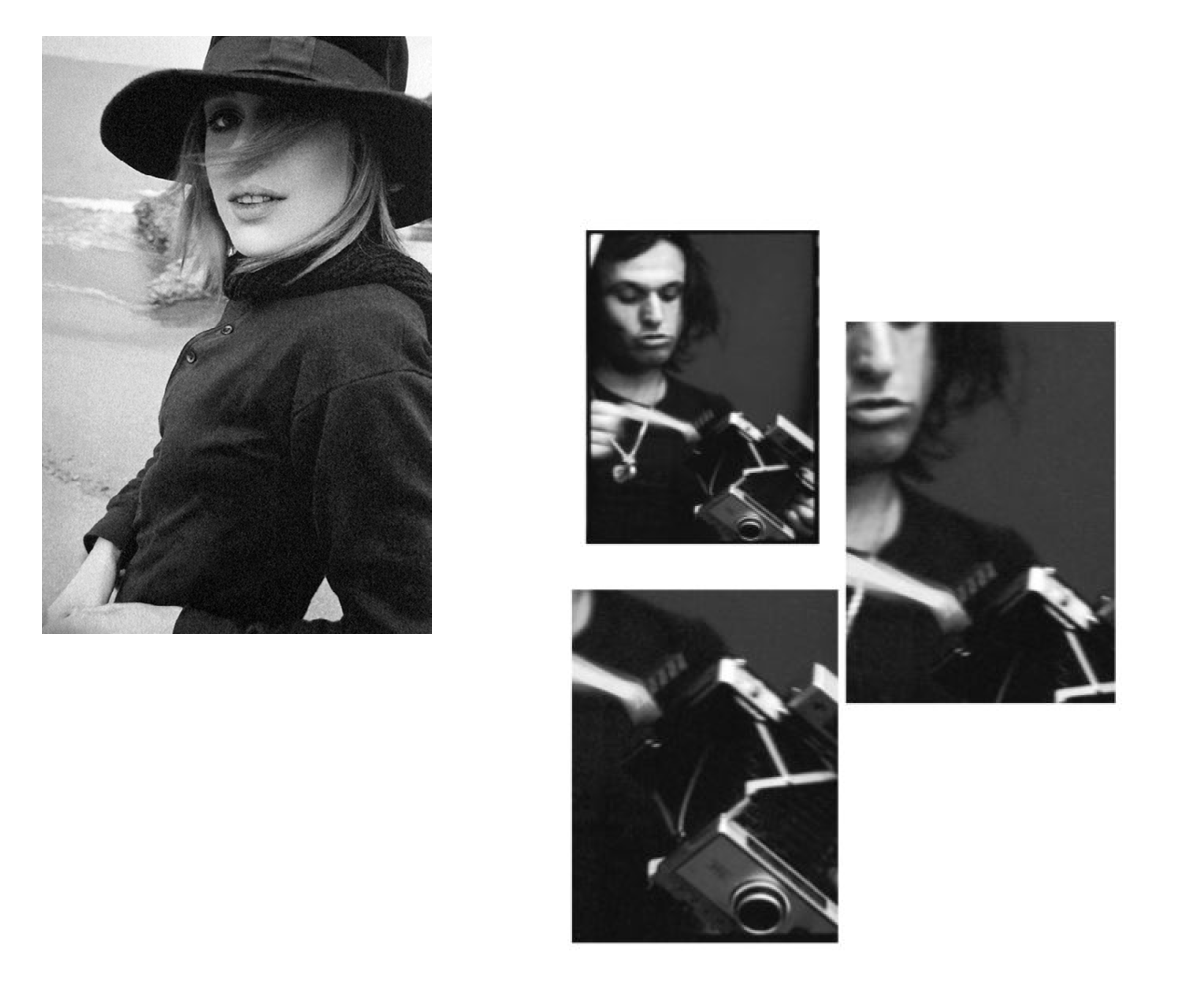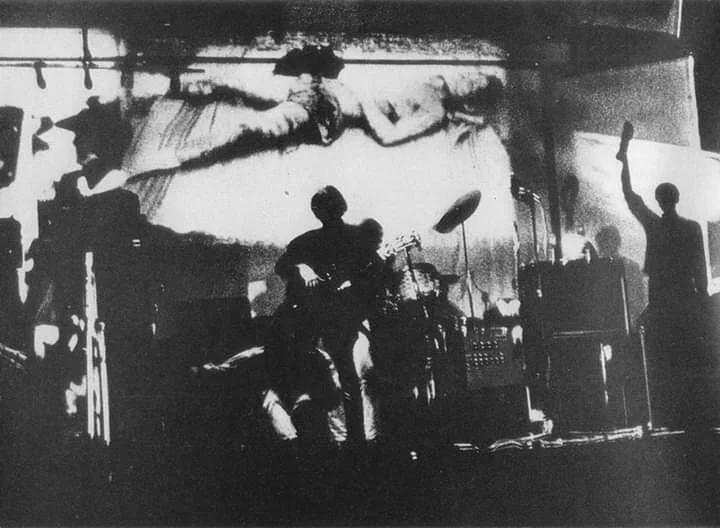Mario Schifano - Of Stars, Stones and Pop Art
Mario Schifano drove a white MG, sported dirty long hair and caftans like a rock star, was the lover of Anita Pallenberg and Marianne Faithfull, inspired a Rolling Stones song, set up a psychedelic band, painted some of the greatest Italian post-WWII works of art, had TV sets constantly switched on in every room of his house and had a devilish grin shaped by drugs. Mario Schifano was the real genius of Italian Pop Art, the Roman Andy Warhol.
Andy Warhol is often wrongly referred to as the only pop art artist with a key role in rock music, but kilometers away from New York, in Rome, Mario Schifano was a pivotal figure in 1960s musical and artistic counter-culture. Born in the Italian colony of Libya in 1934, Schifano has been one of the forefathers and leading members of Italian pop art. His production was an explosive mixture of colours immediacy, film making, Polaroid photography and spasmodic attraction for television - to the point he had a TV set constantly switched on in every room of his house. All elements witnessing the contemporaneity of his production despite not living in the USA. What made Schifano a quintessential pop artist, though, was his interest for mundane life – including drugs, who attributed him the nickname of ‘cursed painter’, like some sort of decadent French poet. This innate interest brought him to undertake several trips to London where in 1966 (some say 1965), in the environments of young British aristocracy, he met the Rolling Stones. The artists introduced the band to his then girlfriend Anita Pallenberg – who would have later become Brian Jones’ flame and consequently Keith Richards’ wife. Anita wasn’t the only woman to cross both the artists’ lives. Marianne Faithfull, in fact, had a much discussed love affair with the painter in 1969. The couple was photographed by the British press in Schifano’s car leaving the Chelsea home the singer shared with Mick Jagger. When Mick got to know that Marianne was having an affair with Schifano he went out of his head. On the day Faithfull returned to the UK Jagger rushed to her home and, despite catching her with Schifano, he persuaded the woman to come back to him by singing ‘Wild Horses’ on his knees. Schifano’s fascination with the Stones came from the thought that no painter could be as famous and hip as pop starts. In order to be known by a broader audience, he wanted to make a band part of his work in parallel to what Warhol was doing in New York. Instead of working with the Stones in England – where the eccentricity of Swinging London could have caused his work to slip in background – Schifano decided to bring the band to Italy. He hosted them more than once in his Roman mansion where legendary parties – who could have made emperor Nerone envious – took place.Left: Marianne Faithfull by Mario Schifano / Right: Mario Schifano processing a Polaroid, 1971
1960s and 1970s Italian pop star Patty Pravo recalls: “In 1966 I always was in Schifano’s loft in Rome, in Campo de Fiori – which he used both as house and atelier. There I met The Rolling Stones for the first time. They were stoned. Mario, after all, was the king of substances. In the living room he had these big jars full of a variety of coloured pills. It was like a drugs self-service.” The fascination between Schifano and The Stones was reciprocal and it wouldn’t be wrong to say theirs was a genuine friendship. Not only Jagger and Richards took part to Schifano’s 16mm film Umano Non Umano (Human Not Human), but the artist also shot and directed the band’s promotional video for Gimme Shelter. Schifano’s attitude inspired the song ‘Monkey Man’ – featured on 1969 LP Let It Bleed – that the Stones dedicated to him. The artist’s love affair with music, though, went beyond his friendship with the band. Despite far from Swinging London, mid-late 1960s Roma was one of the Italian epicentres for beat counter-culture, especially because of the Piper Club that featured some of Schifano’s works as part of its pop art stage decor. It’s at this venue in 1968 that took place a performance of what probably is Schifano’s most ambitious and original project, Le Stelle di Mario Schifano (The Stars of Mario Schifano). Set up in 1967 with four musicians and the aid of film and music producer Ettore Rosboch, Le Stelle were an experimental psychedelic band whose gigs were accompanied by projections of Schifano’s films, Vietnam war clips and other light shows in the style of what was happening in London with Pink Floyd and, especially, in New York with Warhol’s Exploding Plastic Inevitable shows. Mick Jagger in Schifano’s Umano Non Umano, 1968
Italian psychedelia expert, author and musician Salvatore ‘Ursus’ D’Urso says: “Le Stelle can be considered a supergroup because all of its members had already played in other acts. They went to Rome because Piper Club was the place to be if you wanted to be noticed. In Roma, thanks to Ettore Rosboch, they met Schifano without whom the band wouldn’t have existed. Their name came from the stars Schifano was painting all over his works in that period – which you can see on the LP’s cover as well.”
Le Stelle can actually be considered the only other project in the style of the Velvet Underground. They both applied to music pop art principles. “The difference between him and Warhol is that Schifano never exposed the band to the media and always kept it in counter-cultural environments. For this reason and for his techniques Schifano can be considered pop, but he wasn’t interested in representing canned food, celebrities and mass culture. He genuinely gave shape to psychedelic trips,” says D’Urso. Schifano developed an interest for New York art scene – which later influenced many of his works – when in 1963 left his job in an art gallery to fly to the Big Apple. On the plane with him was Anita Pallenberg, then an art student at Accademia delle Belle Arti in Rome, where the painter first met her. The hip couple felt the need to leave the class of the Dolcevita city to witness the burgeoning pop art scene in New York urban chaos. Schifano and Pallenberg moved relentlessly from one studio to the other, watched Warhol experimental films and attended illegal underground parties, always wearing tennis sneakers to run away with ease every time the police would break in and suspend them. Warhol certainly had a big impact on the young Schifano who always paid attention to what the American artist was doing in New York – including The Velvet Underground. However, Le Stelle’s 1967 album Dedicato – which featured an inner booklet with pictures of the band and artworks by Schifano – is far more experimental than The Velvet Underground’s debut. Simply consider its single-tracked side A featuring a 17-minute fuzzy and distorted instrumental jam conceptually inspired by Italian 16th century poem Orlando Furioso. D’Urso says: “The album was revolutionary, especially because of its geographical birthplace. Late 1960s Italy was a place where youngsters mainly emulated Anglo-Saxon influences. Le Stelle were quite brave to record such an album.”As Julian Cope pointed out, Schifano, despite not being a musician himself, subverted the rules of pop music by choosing to have an extended jam on side A – differently to Love’s ‘Da Capo’ or the Stones’ ‘Going Home’ – as a way to introduce the band to the public. This is a feature the album shares with D’urso’s band No Strange. “In our 1985 debut on [label] Toast we opted for a single-track side, with lots of improvisation – similarly to Le Stelle. This wasn’t an obvious choice in days where the underground was dominated by fast post-punk and hardcore two-minute numbers.” The pop art nature of the record was highlighted by the title of track one – ‘Le Ultime Parole di Bradimante, dall’Orlando Furioso, Ospite Peter Hartman e Fine (Da Ascoltarsi con TV Accesa, Senza Volume)’ – that suggested to listen to the song while watching TV with no volume. Dedicato’s B-side, alternating acid and fuzzy tracks to psych-pop ones, offered avant-garde cuts like ‘Molto Alto’ – which anticipated Madchester guitar riffs of 25 years. Le Stelle di Mario Schifano performing at the Piper Club, Turin, circa 1967/1968
Schifano’s incursions in the pop music mass-consumerist market weren’t limited to this album. The artist designed two cover artworks for Italian psych-pop act Equipe 84 – the distorted psychedelic photograph on the sleeve of single 29 Settembre and the pure pop art-style graphic of 1968 album Stereoequipe. It was Schifano who introduced the band members to the Rolling Stones during one of their Italian trips. D’Urso says: “There’s this urban legend [Equipe 84’s singer] Maurizio Vandelli once told me. When he met Brian Jones, the Rolling Stone borrowed his sitar and never returned it.” In autumn 1967 Le Stelle moved to Turin to record their album. Musician Antonmario Semolini was a teenager when he was called to the studio. “I was asked to improvise with the flute on ‘Susan Song’, while Francesca Gentile Camerana sung and played guitar on a separate session. Schifano was never there, really. Ettore Rosboch led the recording sessions and you can hear his voice calling a certain Schizzo [and insulting the Police] in the opening track.” In Turin Le Stelle had a residency in the city’s branch of Piper Club, a futuristic basement venue with multicoloured plastic furniture. “Differently from the one in Rome, it was much more focused on avant-garde art, poetry and theatre exhibitions,” says D’Urso. “I remember the psychedelic light shows during Le Stelle’s gigs at Turin Piper Club. When Schifano came to the city we played a show in an art gallery where they exhibited some of his paintings with the star motif,” recalls Semolini. Le Stelle didn’t gather much success but managed to capture the attention of Italian 1960s hip beatniks and intelligentsia. Their first and only album failed to succeed commercially, also because of Schifano’s choice to distribute it in art galleries only – a decision making it an extremely rare record. Schifano was undoubtedly able to understand Europe’s underground and counter-cultural pop urges and turning them into art. His quality was not being a Warhol disciple, but a pop art guru capturing 1960s spirit in a country less influential in modern art than the USA. No wonder Schifano and Warhol got on well together when they met as witnessed by a photograph which stands out as one of the most iconic pictures of the Italian artist. 

